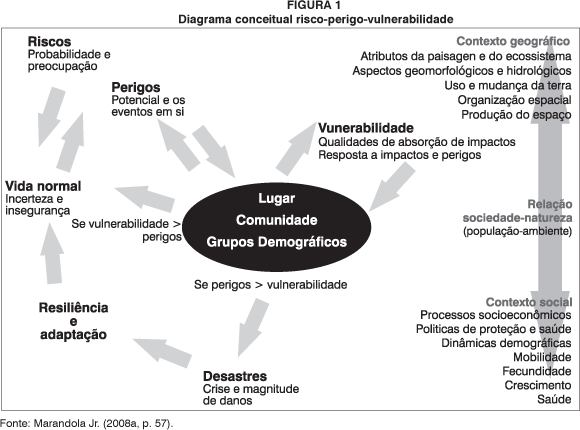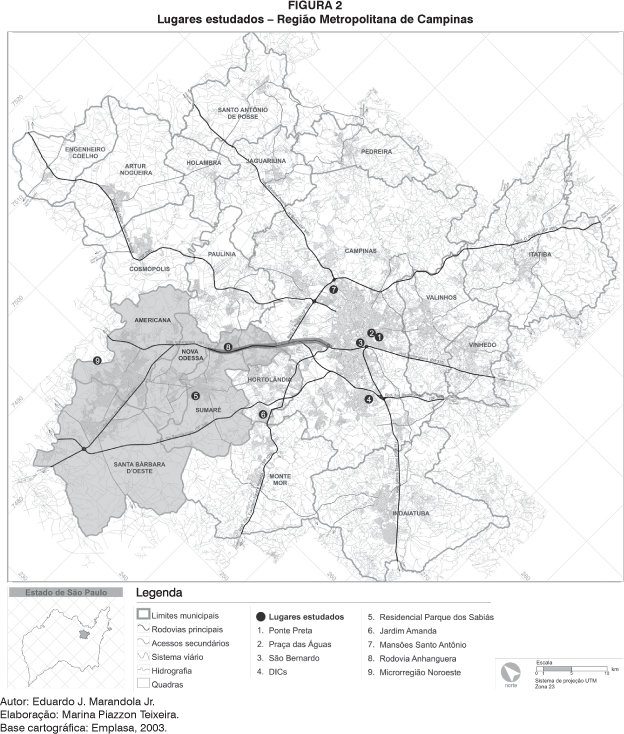The question of "vulnerability to what?" is standard in studies on risks and dangers. In demographic studies the issue comes up in regard to demographic groups that are subject to dangers that can be related to the characteristics of the demographic dynamics or to the groups' socioeconomic situation, which have to do with their life course, family structure or migratory characteristics. The field of population and environment added the spatial dimension to the issue, considering position and situation, which are components of the elements that produce dangers or that provide the conditions to face them. On the one hand, one can note the influence of an ecological approach, which sees the environment as a physical-social set that influences and is influenced by the population and, on the other, the presence of materialistic postulates, which conceive the relationships between society and nature as a social and historical factor regulated by the contradictory and unequal production of space and society. The causal matrix of risks and elements that can interfere in vulnerability is considerably higher in environments strongly modified by human beings, such as large cities. This fact makes it difficult to grasp the causal relationships between certain dangers and certain characteristics of the demographic group. In view of this, observing dangers and the vulnerability of places is a strategy that, on a micro scale, enables one to detect the factors that interfere in the production, acceptance and mitigation of risks. The ecological dimension is re-signified when it incorporates the existential and phenomenic dimensions of places and considers demographic groups in their relationships of involvement and belonging to the surrounding space. On the basis of a number of empirical texts published in recent years, this article reflects on the possibilities of this theoretical and methodological perspective, which uses qualitative field practice and a geographic orientation in constructing a closer dialogue between geography and demographic studies, based on the field of population and environment.
Risks; City; Space; Qualitative methodologies; Geography of the population



